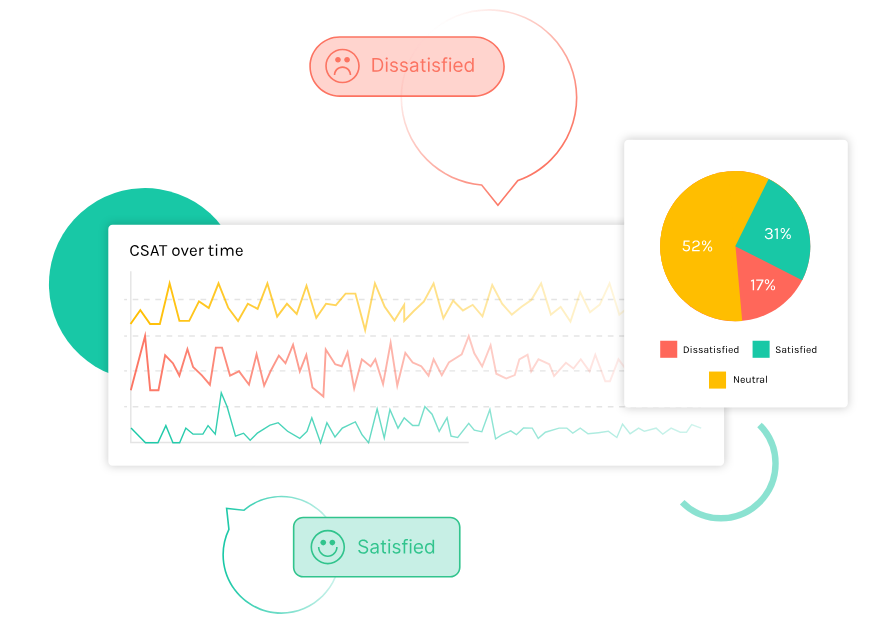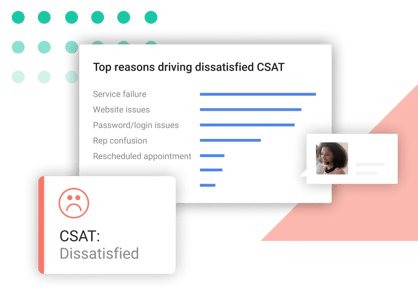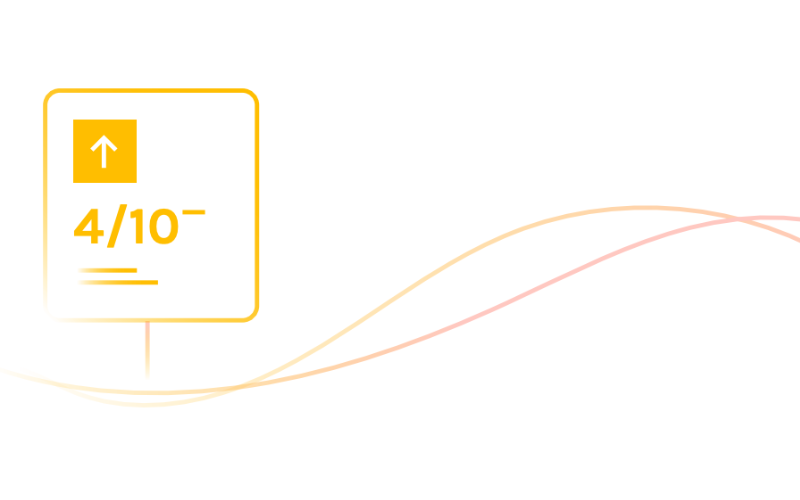Get a CSAT Health Check with Tethr's CSATai
4-step CSAT Health Check
1
Send us up to 10,000 customer interactions (calls, chats).
2
We’ll score every customer interaction with Tethr’s AI.
3
Get a dashboard with reasons and drivers for the scores.
4
Gain new VOC insights and actionable takeaways .
Predict CSAT scores with
Tethr's CSATai.
Tethr’s CSATai analyzes your contact center calls and chats to give you a complete view of the voice of the customer – and what your business can do to impact satisfaction.
| Get Predictive CSAT scores using an AI language model | Track CSAT & VOC trends in a customizable dashboard | ||
| Get a satisfaction score on 100% of customer conversations | Identify the top factors impacting customer satisfaction |
Say goodbye to low-response CSAT surveys.
|
|
|
 Use the customizable CSATai dashboard to monitor satisfaction and track trends. Gain voice of the customer insights like never before. Use the customizable CSATai dashboard to monitor satisfaction and track trends. Gain voice of the customer insights like never before. |
 Pinpoint the top factors affecting customer satisfaction so you can make impactful changes in your contact center. Pinpoint the top factors affecting customer satisfaction so you can make impactful changes in your contact center. |
Trusted by leaders like you...
Gain a deeper understanding of customer satisfaction.
CSATai uses machine learning to predict each customer’s satisfaction score based on words used in their voice or chat interactions, allowing your business to learn from the voice of every customer.


Identify the factors impacting the customer experience.
Tethr lets you drill into conversations with negative or positive CSAT scores so you can uncover the factors that have the biggest influence on customer satisfaction and identify opportunities to improve the customer experience.
“Predictive CSAT uses data and past feedback to predict customer satisfaction levels. It helps the call center anticipate problems, offer personalized suggestions, and even anticipate returns or exchanges. This not only boosts the customer experience but also prevents negative reviews or returns, protecting the business's reputation and profits.”
-Arnel Deguito, Customer Experience Analyst
Why traditional CSAT surveys fall short
- Only a small percentage of customers complete a survey after a service interaction.
- Customers most likely to complete a survey are the ones who had either an extremely positive or negative experience.
- The combination of low response rates and sample bias makes it difficult to gauge customer satisfaction accurately.

How CSATai fills the gaps
- Tethr’s machine learning model measures satisfaction based on the words and phrases in customer conversations.
- CSATai predicts a positive or negative CSAT score for every customer, not just those who complete surveys.
- The model continues to learn as it ingests more conversation data, enabling it to deliver CSAT scores and insights with a high level of accuracy.
Frequently asked questions
How were the CSATai models trained?
How does CSATai determine satisfaction?
Tethr’s CSATai calculates customer satisfaction using a proprietary large language model (LLM) specifically tuned to match customer satisfaction surveys. The model identifies words and phrases within the full context of the customer conversation that are likely to indicate satisfaction or dissatisfaction. For example, a customer saying, “This is so frustrating” is likely to be dissatisfied. CSATai scores each conversation as positive, negative, or neutral based on all the text in the conversation in context.
Can I fine-tune CSATai to my business?
Yes–the more data CSATai ingests, the better it becomes at predicting CSAT scores for your customer conversations. If you disagree with how CSATai scores a conversation, you can provide feedback within the Tethr platform, which helps the model learn and improve.
 Get a positive, negative, or neutral CSAT score for every customer conversation. Eliminate survey bias and increase your sample size to 100%.
Get a positive, negative, or neutral CSAT score for every customer conversation. Eliminate survey bias and increase your sample size to 100%.